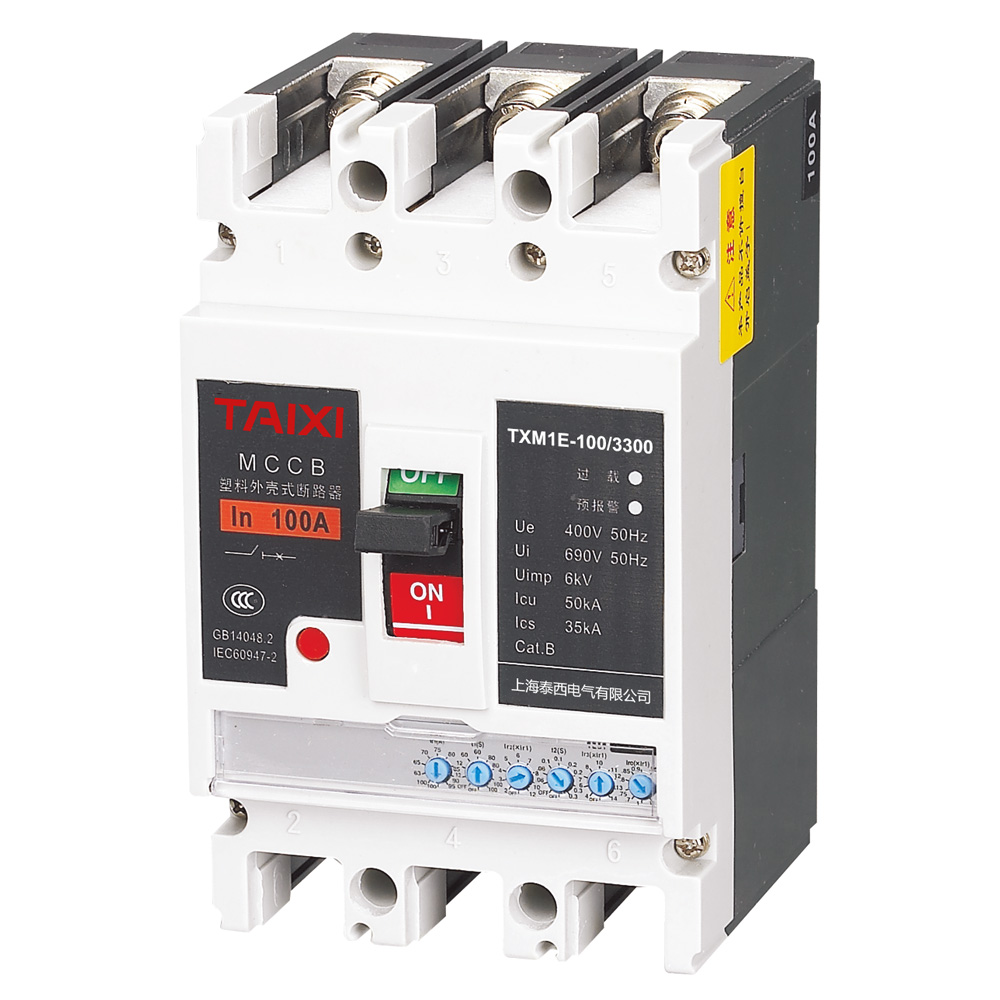Application of Circuit Breaker in Low Voltage Distribution Box
Circuit breaker is one of the most important distribution appliances in low voltage distribution box/cabinet. Because of the different places and conditions used, low voltage circuit breaker are divided into four categories: distribution protection, motor protection, over-current protection for household and similar purposes, and residual current (leakage) protection. Due to the user's incomplete understanding of the protection characteristics and application scope of LV circuit breaker, various errors or problems often occur in the actual use of low voltage circuit breaker. Next, circuit breaker manufacturer TAIXI will describe the definition, main technical performance and parameters of low voltage circuit breaker. In order to enable users to have a deeper understanding of LV circuit breaker.
1. Overview
In modern society, all walks of life and people's lives cannot leave electricity. After the generation of electricity, distribution is a very important link in transmission and use. The electrical equipment used in the distribution system includes transformers and various high and low voltage electrical complete sets. The electrical products widely used in the electrical complete sets are low voltage circuit breakers.
The circuit voltage with frequency of 50Hz or 60Hz, rated voltage of 1200 V or less, DC rated voltage of 1500V or less is called low voltage. Low-voltage electrical appliances (including low voltage circuit breaker) are electrical products used for the above-mentioned grid voltage. According to the relationship between low-voltage electrical appliances and the use system, it can be divided into distribution electrical appliances and control electrical appliances. Distribution electrical appliances include low voltage circuit breaker and fuses, knife switches, switching switches, etc.
LV circuit breaker is a kind of switching device which can not only turn on and break normal load current and overload current, but also turn on and break short-circuit current. Low-voltage circuit breaker not only plays a control role in the circuit, but also has certain protective functions, such as overload, short circuit, under-voltage and leakage protection. There are many ways to classify low voltage circuit breakers, which can be classified according to their structure, function and different protection objects. According to structure and function, it can be divided into two categories: plastic shell type and universal type; according to different protection objects, it can be divided into four types: distribution protection type, motor protection type, household and similar household place protection type, residual current (leakage) protection type.
2. Main Technical Parameters of LV Circuit Breakers
(1) Rated voltage: refers to the RMS rating of normal working voltage, which can be added to electrical appliances for a long time without adverse phenomena.
(2) Rated frequency: rated frequency is 50 Hz and 60 Hz.
(3) Rated current: (1) Rated current of circuit breaker housing grade is expressed by rated current of maximum detrusor that can be loaded in frame or plastic shell of the same size and structure.
The rated current of the circuit breaker is rated continuous current, which is the current that the tripper can pass for a long time. Circuit breakers with adjustable trippers are the maximum currents that can be passed over a long period of time.
(4) Temperature rise: The operating temperature of each component of the circuit breaker must be less than a rated value.
(5) Power-frequency withstand voltage: According to the insulation voltage level between the circuit breaker's input and output lines and the phase of the circuit breaker, after closing the circuit breaker, after parallel connection of the electrodes and the metal shell, a power-frequency voltage value is applied, which does not allow flashover or breakdown.
(6) Protection characteristics of overload and short circuit: two-stage protection, three-stage protection and single-phase grounding fault protection.
(7) Residual current: Under certain conditions, only residual current is used to make the residual current act on the circuit breaker.
(8) Residual inactive current: Under certain conditions, only residual current is used to make the residual current operated circuit breaker inactive.
(9) Life: It can be divided into mechanical life and electrical life.
(10) Short-circuit segmenting ability: the ability to limit short-circuit segmenting and the ability to operate short-circuit segmenting.
(11) Short-term withstand current Icw: Under certain test conditions, the short-term withstand current value that the circuit breaker can withstand without being destroyed should also be specified in the design and development: the minimum rated short-term withstand current. When the rated current In < 2500 A, the rated short-term tolerance current Icw is l2In or 5kA, which is larger; when In > 2500 A, it is 30kA, and the delay time should be no less than 0.05s, and the optimal value is 0.05-0.1-0.25-O.5-1s. It can withstand current Icw in short circuit, and is only suitable for circuit breakers with short circuit delay characteristics.
(12) Power consumption of circuit breaker itself: refers to the heat power loss caused by the resistance of the circuit breaker when it can withstand the maximum current, which is generally expressed by three-phase total power watt.
With the rapid development of China's national economy, distribution is used more and more in the power grid, and the demand for power consumption is getting higher and higher. Correct use of circuit breakers can effectively improve the operation performance of low-voltage distribution system. Therefore, it is particularly important to select low voltage Circuit Breaker safely and economically. In the next section, we describe the selection and installation conditions of low voltage Circuit Breaker in low-voltage distribution boxes.




